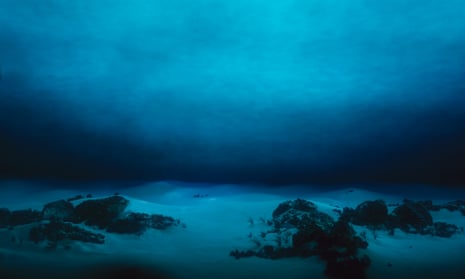HP Lovecraft’s Cthulhu is a slobbering, tentacled horror lurking on an island of impossible stone structures spat up from the bowels of the Pacific. Lovecraft wrote nearly 80 short stories between 1917 and 1935 and Cthulhu appears in many of them: in the footnotes of an old manuscript, as a word scrawled by a trembling hand in a diary, as a name screamed by a madman in a deserted town.
The presence of this eldritch terror in dozens of disparate stories gives one the impression that it lives behind the pages of the book, rather than within them. As with all of Lovecraft’s inventions, Cthulhu is never really described. It is merely assigned adjectives – “sticky”, “tenebrous”, “slavering”. But real, sublime terror does not come from description. It comes from shapes in the dark.
When I was at university the only copies of Lovecraft’s books were decades old and dog-eared, located in the in the windowless basement of the library and unavailable for withdrawal. I sat there, under a flickering bulb, reading stories with names like The Dunwich Horror, The Shadow Over Innsmouth, and my favourite – The Call of Cthulhu. Lovecraft’s fiction concerns itself with darkness and the horrifying abyss of the unknown. Being of a somewhat fearful disposition, the shadows in the basement regularly got the better of me, and I would quickly pack up my books and trip up the stairs into the daylight after seeing shapes moving in the dark.
The Call of Cthulhu begins with its narrator opening a manuscript left to him by his dead uncle. The manuscript is split into sections. The first is his uncle’s account of a young artist, haunted by dreams of an island of Cyclopean monoliths and sepulchres, and a writhing thing within, winking in the dark. In the next, a police inspector discovers a cult of Louisiana swamp priests sacrificing locals and worshipping a repulsive statuette. Upon questioning the high priest of the cult about the statuette, he is told it is Cthulhu, and that “In his house at R’lyeh dead Cthulhu waits dreaming”.
Lovecraft’s narrative dances around the monster, as each section in the manuscript moves closer to its animating heart, “the corpse city of R’lyeh”. Events in gothic fiction often feature written documents to serve as “authenticating details” – Walton’s letters in Frankenstein, Mina Harker’s diary in Dracula. In the final, climactic section of The Call Of Cthulhu, the narrator discovers a cutting from an old newspaper article about a dead ship found floating in off the coast of New Zealand, and the diary of one of its crew. It is the story of a ship that accidentally sails towards an island of slimy green stone in the middle of the ocean, covered in impossible structures and a great, slobbering horror.
Built by a creature not restricted by time and space, the stone structures on R’lyeh are described as “non-Euclidean”, impossible for three-dimensional beings to see or comprehend. In the final section of the book, one of the sailors who has the misfortune of landing on the island is “swallowed up by an angle of masonry which shouldn’t have been there; an angle which was acute, but behaved as if it were obtuse”.
In Lovecraft, rationality and science are invoked merely to be confounded, the puzzle of the island’s impossible shape mirrors the mystery of the monster himself. Like his island, Cthulhu is a blank spot in the text, “darkness visible”. I sat in that library at university looking into the shadows, and in the middle of all those books I was staring into something unknown, an abyss. And the abyss was staring back.

Comments (…)
Sign in or create your Guardian account to join the discussion